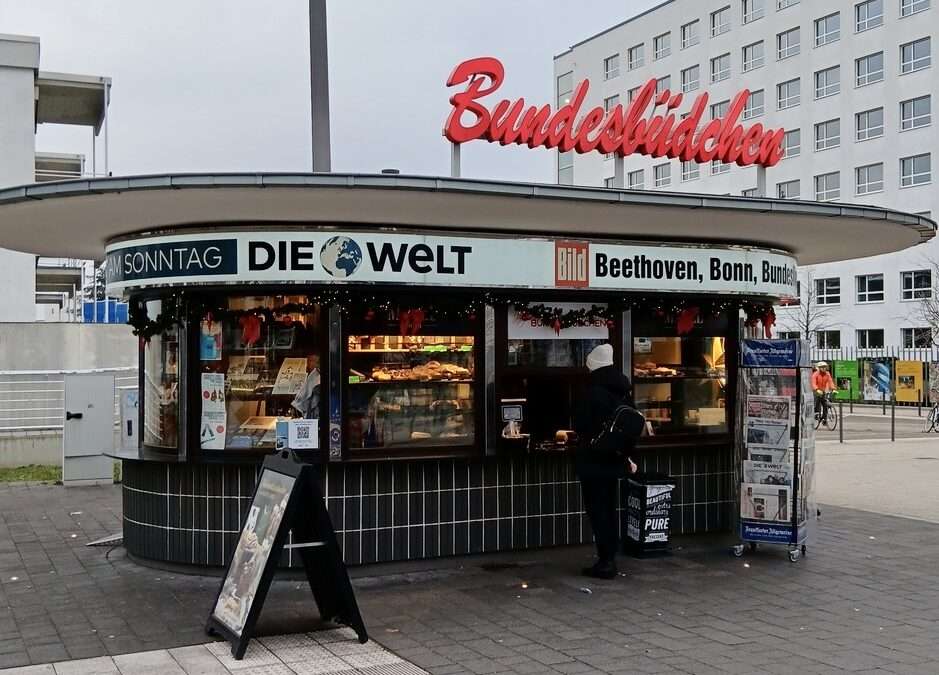
by Annette Bohlen | Sep, 2025 | architecture, EN, history, points of interest
Built in 1957 and kidney-shaped, with a tiled base and a wide canopy: a (cult) kiosk in the middle of the UN and former government district in Bonn.
In this district, somewhat away from the city centre, there has never been many shops or restaurants, just a small row of kiosks for essentials during government times. But the most important newspapers were available at Jürgen Rasche’s kiosk, named after his mother, the long-time owner. This is where prominent politicians of the time, such as Joschka Fischer and Norbert Blüm, as well as employees of the surrounding federal institutions and journalists would meet for a coffee or a bratwurst. In this government district, the distances to offices and meetings or to the plenary hall were short on foot or by bicycle, and people liked to meet for personal exchanges in the absence of other options in the press club, in Villa Dahm or in the small bar under the substitute plenary hall on the banks of the Rhine. Or – as mentioned – for a quick exchange of information at the Büdchen.
-
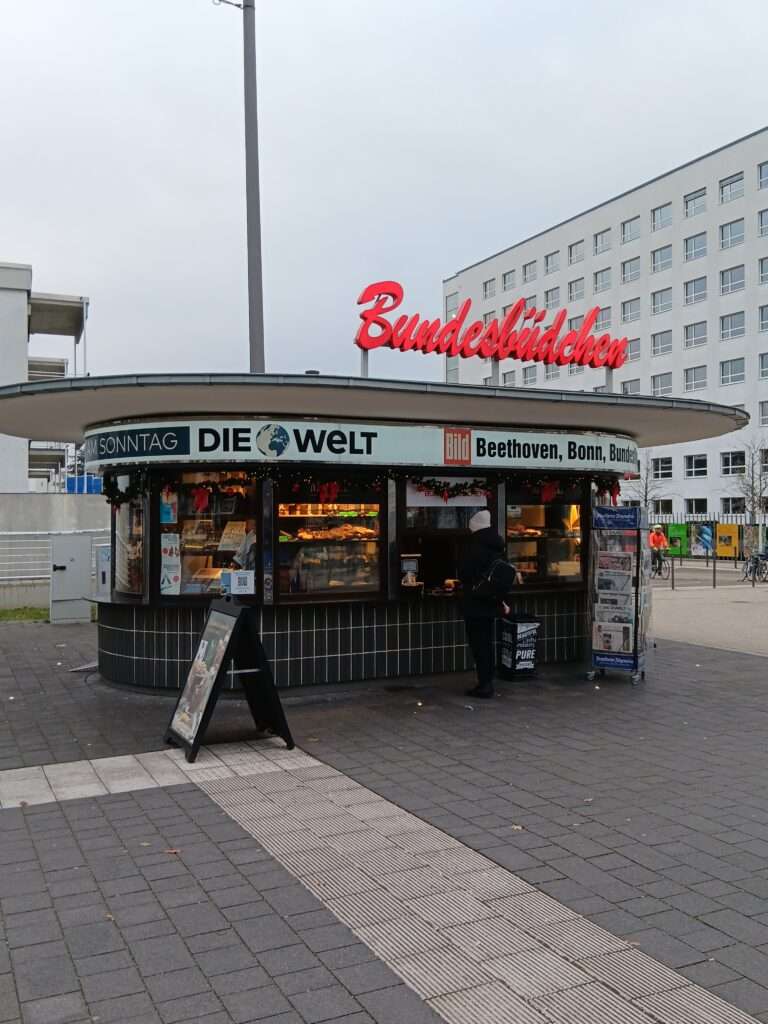
With the relocation of the capital to Berlin in 1999, the Bundesbüdchen initially lost its importance and eventually had to make way for the new WCCB (World Conference Centre Bonn) building. At least the noble kiosk was saved by its listed status and stored in a freight yard. It remained a symbol for the people of Bonn of the city’s heyday as the seat of government, so a dedicated support association was eventually able to finance its restoration, and today we can enjoy this relic from the days of government, now located next to the World Conference Centre, where bread rolls, cakes and more are sold.
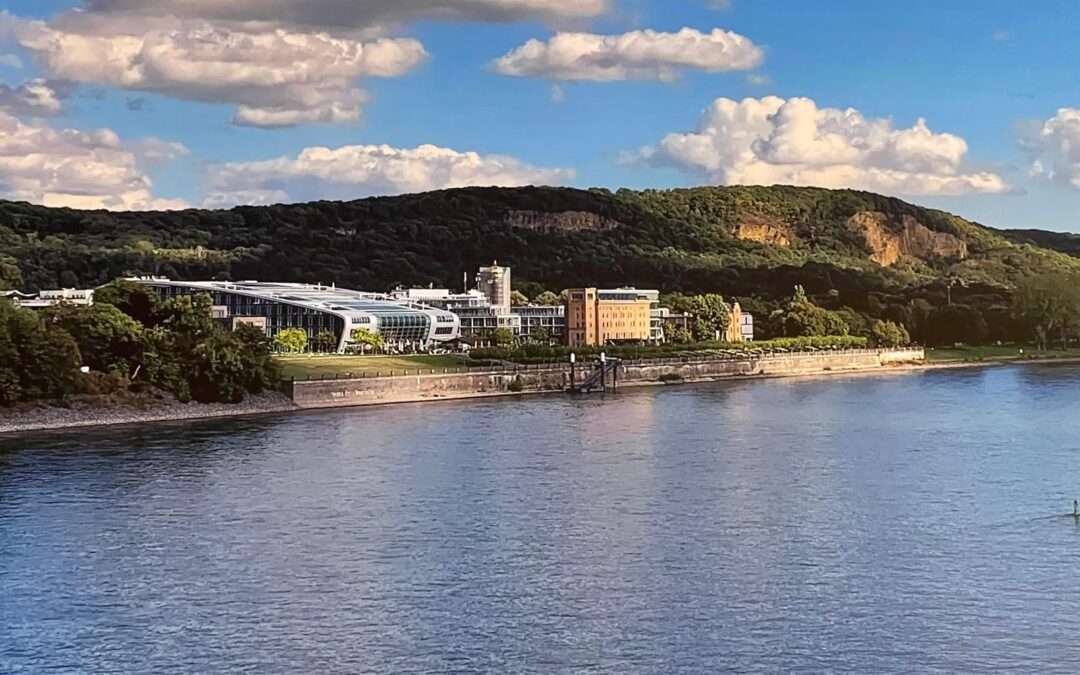
by Annette Bohlen | Jan, 2025 | architecture, EN, points of interest, Rhine region
I remember well the cement factory, which was vacant in the 1990s (we called it the ‘ghost house’), which we had to go around on the bike path to Königswinter. Today, here – on the sunny side of Bonn – it is a very popular meeting place at the weekend. Cyclists take a break here, families use the lawns and play ground, and pubs and restaurants entice you with food and drink.
The history of the Portland cement factory ended in the 1980s. Then began a long and varied process of planning, tendering and competitions to determine what could be built there.
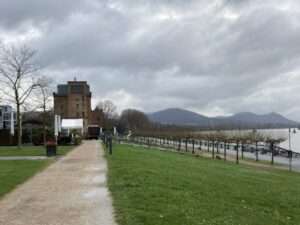
Rhine promenade with Portland Cement building in view
Finally, an outstanding example of the transformation of an industrial site was created – and is still being expanded – on a beautiful new Rhine promenade. Innovative architecture, sustainable urban planning and an attractive mix of uses blend well with the converted cement factory, a water tower and the former director’s villa.
Planning and conception
Planning for the Bonner Bogen began in the early 2000s and was overseen by renowned architects and urban planners such as Karl-Heinz Schommer. The master plan envisaged a mix of uses, including office space, hotels, restaurants and residential accommodation. A key element was the integration of the site into its natural surroundings, in particular by taking advantage of its proximity to the Rhine and orienting the buildings towards the river. The architectural design emphasised modernity and high-quality materials, while historical elements, such as the heritage-listed water tower, were preserved and integrated into the new buildings.
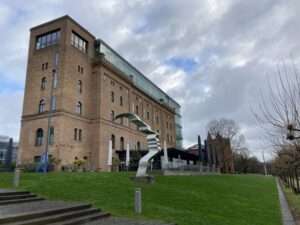
Sculpture “Mother Earth” by American artist Barton Rubenstein
Particular attention was paid to ecological sustainability. The buildings were constructed according to modern environmental standards, with a focus on energy efficiency and the use of renewable energies.
Implementation and establishment
The construction phase began in 2004 and was realised in several stages. One of the first and most well-known buildings is the Kameha Grand Hotel, which opened in 2009. With its architecture and special interior design, it has become an emblem of the Bonner Bogen. It attracts not only tourists, but also companies for events and conferences.
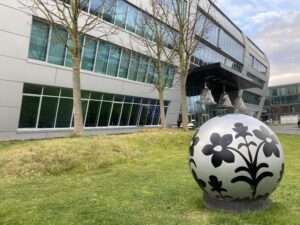
“Egg” by Marcel Wanders
Numerous office spaces were built next to the hotel, which are used primarily by companies in the technology, science and consulting sectors. The combination of modern workplaces, high-quality gastronomy and recreational spaces such as the Rhine Cycle Route makes the location a sought-after place for companies and employees.
The entire area has been easthetically enhanced with the addition of several sculptures including: the sculpture “der Denker” by German artist Dieter W. Meding which sits in front of the headquarters of software developer SER; the sculpture “Mother Earth” by American artist Barton Rubenstein, which sits in front of the restaurant Rohmühle; and the sculpture “Mother Earth”, earmarking the 75th anniversary of the United Nations.

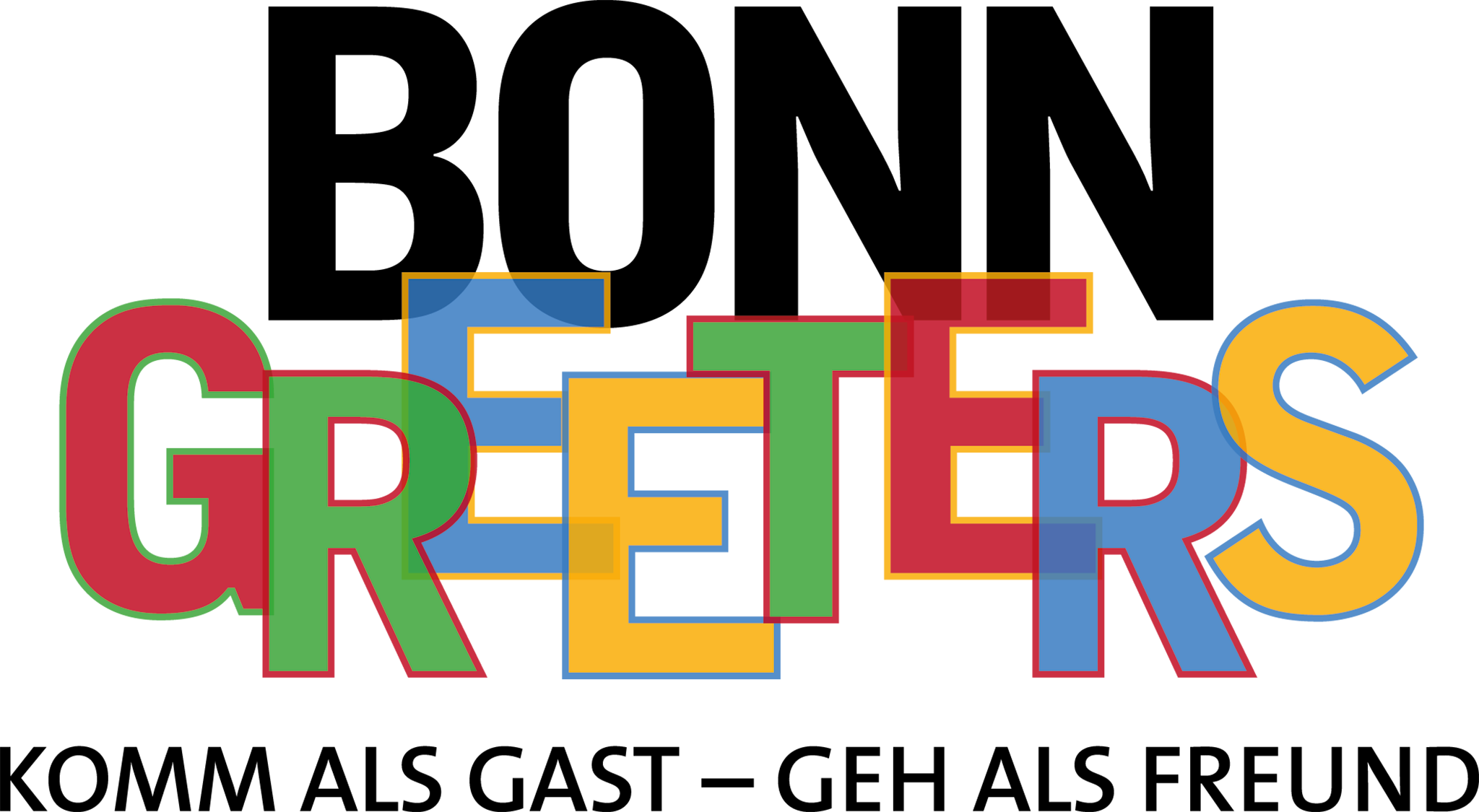





Recent Comments